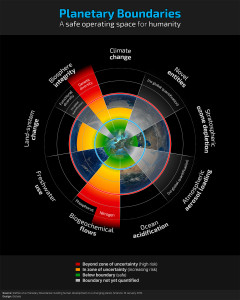What you will find on this page: LATEST NEWS; plastics and carbon budget; running out of planet (video); deep sea now in jeopardy; human dimension missing in climate modelling; planetary boundaries; climate change a symptom – story of the violin; throwaway society; fresh water consumption crossing boundary; global footprint (video); Global Footprint Network (video); Earth Overshoot Day (video) Rockefeller-Lancet Commission planetary health report;
NOTE: In ecological terms, the carrying capacity of an ecosystem is the size of the population that can be supported indefinitely upon the available resources and services of that ecosystem. Living within the limits of an ecosystem depends on three factors:
- the amount of resources available in the ecosystem,
- the size of the population, and
- the amount of resources each individual is consuming.
Latest News End Latest News Plastic pollution has emerged as one of the most pressing environmental crises of our time, affecting ecosystems, human health, and economies worldwide. Recognizing the urgency of this issue, countries at the United Nations Environment Assembly adopted a resolution in March 2022 to initiate negotiations on an international legally binding instrument to end plastic pollution, including in the marine environment. The resolution established an Intergovernmental Negotiating Committee (INC), which has met multiple times to try to determine an agreement. Nothing has been achieved to date. Source Carbon Brief analysis shows that without any agreement to cut plastic production, emissions from plastics could consume half of the remaining carbon budget for limiting warming to 1.5C above pre-industrial levels. One expert tells Carbon Brief that the best outcome possible for the negotiations is to ratify a global target to limit plastics production, coupled with legally binding national targets. However, she warns that oil-producing countries are likely to veto any such proposal. Carbon Brief calculations suggest that plastic lifecycles generated more than 2.7bn tonnes of CO2 equivalent (GtCO2e) in 2023 – around 5% of global emissions. This is roughly three times more than the emissions produced by aviation, as shown in the graphic above. Most plastics are made from fossil fuels, using oil, coal or gas converted into feedstock chemicals. Extracting the fossil fuels needed from underground is directly associated with greenhouse gas emissions, for example due to leaky mines, wells and pipes that contribute to rising methane emissions. Overall, extracting oil, gas and coal from the ground accounts for around one-fifth of plastics production emissions. The rest of the emissions associated with plastics production come from the processes required to first convert the fossil fuels into plastics. The fossil fuels are refined to produce petrochemical feedstocks, such as ethane and naphtha. The world’s consumption of oil is currently around 100m barrels per day. According to an International Energy Agency (IEA) special report, around half of the oil produced globally is currently used to fuel road transport – and this is being squeezed by the rising popularity of electric vehicles (EVs). Along with renewables substituting for oil-fired electricity generation and increasingly efficient engines, EVs are the major driver of expectations that global oil demand could soon peak. Petrochemicals feedstocks – chemical substances derived from fossil fuels that can then be used to make products such as plastics, rubbers and fertilisers – are widely seen as the last growth market for global oil demand. As such, the future of the $700bn plastics production industry is a key concern of the fossil-fuel industry. The figure in this graph shows projected annual growth in oil demand from petrochemical feedstocks (red) and other sectors, such as road transport and aviation (blue), up to 2030, according to the IEA’s Oil 2024 report. Numbers above zero indicate an increase in oil demand compared to the previous year, while numbers below zero mean a decrease. To have a 50% chance of limiting global warming to 1.5C above pre-industrial levels, humanity can only emit a further 200bn tonnes of CO2, according to the latest estimate from the emissions gap report from the UN Environment Programme (UNEP). Unless there is a change in current trends, plastics production is expected to use up a significant proportion of this carbon budget. Carbon Brief finds that, under the conservative growth scenario, annual “lifecycle” emissions from plastics could double by 2050, reaching 5.2GtCO2e. Under this scenario, plastics production, use and disposal would cumulatively emit 104GtCO2e between 2024 and 2050, consuming more than half of the remaining carbon budget. Under the rapid growth scenario, cumulative emissions would be 130GtCO2e – or around 65% of the remaining carbon budget. The rise in annual emissions from plastics, including all stages from fossil-fuel extraction to plastics disposal, are shown above. The black line indicates historical emissions, while the dark blue line shows the conservative growth scenario from the LBNL report, originally taken from the OECD. Developed countries have already been accused of bowing to pressure from lobbyists seeking to avoid any caps on plastics production at the international negotiations. According to CIEL analysis, at the last set of talks, 196 fossil fuel and industry lobbyists registered, up from the 143 who registered at the previous discussions in Nairobi. Duran tells Carbon Brief that plastics production is an “existential” issue for Gulf countries, whose economies currently rely on continued oil and gas extraction. As a result, she says that these countries likely will not be “negotiating in good faith” at the INC-5 and “will never accept a treaty that has any mention of plastic production, because it’s their lifeline”. She argues for other countries to “overcome this idea of universal ratification” to ensure a “good” treaty. According to expert interviews conducted by the University of Portsmouth, crucial outcomes from the negotiations include deciding on a voting mechanism as a backup if consensus cannot be reached. (The UN climate regime must take all decisions by consensus because rules on how it makes decisions – including voting – were never agreed.) A 2021 study explores four pathways through which the global plastics industry could reach net-zero by 2050. These are: a recycling pathway; a CCUS pathway; a biomass pathway; and a circular carbon pathway that combines the three approaches in an “optimal” way. The combined pathway, shown above, is the only scenario that reaches net-zero emissions. The chart shows the flow of carbon (in million tonnes) through the full lifecycle of plastics under a net-zero scenario in the year 2050. The width of each arrow corresponds to the amount of carbon flowing. In this scenario, around 38% of plastic feedstocks would be made from biomass, 17% from synthetic feedstocks, 44% from recycling and less than 1% from fossil fuels. This scenario would require an effective recycling rate of around 61%, with only 5% of plastics going to landfill and 34% ending up in the atmosphere through incineration. However, the authors highlight how challenging it would be to fully decarbonise plastics, if production levels continue to rise. 26 June 2017, the Conversation, Logically, how is it possible to use more resources than Earth can replenish? Since the 1970s, humans have used more resources than the planet can regenerate. This is known as overshoot. The WWF Living Planet Report has reported overshoot every two years since 2000. However, this fact can inspire some confusion. How can it logically be possible for us to use more resources than Earth can produce, for decades on end? There are two basic concepts at work here. One is our ecological footprint, which can be very loosely understood as a way of tallying up the resources we use from nature. The other is the planet’s ability to provide or renew those resources every year: its “biocapacity”. When our ecological footprint exceeds Earth’s biocapacity, that’s unsustainable resource use. Unsustainable resource use can occur for some time. The environmental thinker Donella Meadows used a bathtubanalogy to explain how. Imagine a bathtub full of water, with the tap running and the plug out at the same time. It is possible for more water to flow out of the bath than into it for some time without the water in the tub running out. This is because the significant store of water in the bath acts like a buffer. The same goes for nature. Read More here Missing human dimension in climate modelling 28 February Climate News Network: For the second time this year, a group of climate scientists has called for a new approach to climate change research to produce a better and more precise idea of how the world will change as global average temperatures rise. The latest call comes from a team of US and Japanese scientists, who argue in their report in National Science Review journal that the human dimension is missing. What people do over the next decades will feed back into the mechanics of climate change. The missing dimensions of the human impacts and contribution, they say, are threefold: the economic inequalities that stoke conflict and drive migration; the levels and patterns of consumption of resources that fuel these inequalities; and the numbers of people consuming these resources and demanding energy to improve their lives over the next two generations. So the researchers argue that, as a matter of urgency, climate modellers must try to make sense of the future by coupling their understanding of the Earth system – aspects such as temperature, evaporation, rainfall, forests, deserts, icecaps – with the human systems of agriculture, urban growth, investment, traffic, aid and trade. Access article here and full National Science Review article, “Modeling sustainability: population, inequality, consumption, and bidirectional coupling of the Earth and Human Systems” here January 2016: Four of nine planetary boundaries have now been crossed as a result of human activity, says an international team of 18 researchers in the journal Science (16 January 2015). The four are: climate change, loss of biosphere integrity, land-system change, altered biogeochemical cycles (phosphorus and nitrogen). Two of these, climate change and biosphere integrity, are what the scientists call “core boundaries”. Significantly altering either of these “core boundaries” would “drive the Earth System into a new state”. “Transgressing a boundary increases the risk that human activities could inadvertently drive the Earth System into a much less hospitable state, damaging efforts to reduce poverty and leading to a deterioration of human wellbeing in many parts of the world, including wealthy countries,” says Lead author, Professor Will Steffen, researcher at the Centre and the Australian National University, Canberra. “In this new analysis we have improved our quantification of where these risks lie.” Other co-authors from the Centre are Johan Rockström, Sarah Cornell, Ingo Fetzer, Oonsie Biggs, Carl Folke and Belinda Reyers. Source: Stockholm Resilience Centre Addressing Key Misconceptions The basis behind the framework: The conceptual framework for the planetary boundaries research is based on identifying biophysical boundaries that are intrinsic to the operation of Earth as a system. They are not policy based adaptations with assessments on land needs per capita, land productivity assumptions, or amount of land required to provide energy/food needs of a certain size of world population. In that sense, the concept is void of policy assumptions. The original scientific questions we posed were: It was a scientific effort to identify the ample evidence that Earth not only is a coupled self-regulating system, but also a system with finite limits. They sought to identify boundary positions beyond which we cannot exclude non-linear changes in one or several sub-systems on Earth. It is up to societies to choose where the boundary position is placed. They chose to place it at the lower end of the uncertainty range in science as a measure of applying a precautionary principle (e.g., for climate change at 350 ppm (CO2)). One could also take a more risk prone approach, opting for the higher end of our analysis of uncertainty, in this case at 550 ppm (CO2). This is a social choice, but the range is based on an Earth System analysis. Read More here Planetary Boundaries – what are they? Planetary Boundaries – Some Questions and Answers Planetary Boundaries for Business Another response re overstepping the boundaries 23 April 2015, Resilience, Johan Rockström, Bounding the Planetary Future: Why We Need a Great Transition: We confront an existential risk without historic precedent: human environmental pressures have reached such a pace and intensity that they may cross tipping points, irreversibly altering the state of the Earth system. As the human enterprise becomes more encompassing and interdependent, the prospect of achieving human well-being within the dominant development paradigm grows dim. However, an alternative sustainable development paradigm that pursues social, environmental, and economic goals separately would likewise prove inadequate. Instead, we need an integrated perspective to calibrate the operation of the human system so that it remains within safe parameters for a stable Earth system. The planetary boundary framework contributes to this new paradigm by delineating a safe operating space, in terms of the degree of human perturbation of environmental processes, consistent with maintaining the planet’s stability. The urgency of the challenges ahead demands a two-prong strategy: acting within our current obsolete development framework to bend environmental and social justice curves as much as possible, while simultaneously fostering the longer-term shift in consciousness to values and institutions that equitably integrate people and planet. Read More here Climate change is but a symptom of the complex interaction of earth’s systems responding We live in a world where a majority of people are primarily focused on trying to stay alive/ feed themselves, their families and find some happiness amongst the chaos and where a minority of people believe that they can take what they want (beyond what they need) for their own gain with little/no regard for their fellow travellers or other life that is also needing to share these dwindling resources to live. The pointy end is that there are just too many people; too many inequities; too much pain; and too much concentrated power in a few hands that will not give ground gracefully. And for those of us that have the privilege to live in a relatively peaceful part of the world but in a manner that requires the resources of 3.6 Earth’s to sustain our demands, (if the rest of the world lived like us – thank goodness they don’t!) the conundrum is how can we downsize with least disruption to our comfortable lives and still reduce the harm we are continuing to inflict on the planet at the same time. I don’t think any of us has the answer. It is an uncomfortable space but one that needs to be openly acknowledged as we continue to work with the paradox. Following is a story about a violin, by Richard Heinberg (Post Carbon Institute) which simply portrays the dilemma we are facing When I’m not writing books or essays on environmental issues, or sleeping or eating, you’re likely to find me playing the violin. This has been an obsessive activity for me since I was a boy, and seems to deliver ever more satisfaction as time passes. Making and operating the little wooden box that is a violin is essentially a pre-industrial activity: nearly all its parts are from renewable sources (wood, horsetail, sheepgut), and playing it requires no electricity or gasoline. Violin playing therefore constitutes an ecologically benign hobby, right? It probably was, a couple of centuries ago; now, not so much. You see, most violin bows are made from pernambuco, a Brazilian hardwood that’s endangered because too many bows have already been made from it. Ebony, too, is over-harvested; it’s used for making fingerboards, tuning pegs, and bow parts. Some fancy older violin bows are even decorated with tortoiseshell, ivory, and whalebone. And while maple and spruce (the main woods from which violins are constructed) are not endangered, whole forests are being cut in China to meet the burgeoning global demand for student instruments. Modern strings (most of which are made using petroleum derivatives) are often wound with nonrenewable silver or aluminum, and almost nobody tries to recycle them. You see, the real problem with violins is one of scale. If there were only a few thousand violinists in the world, making and playing fiddles would have negligible environmental impact. But multiply these activities by tens of millions and the results are deforestation and species extinctions. Read More: Only Less Will Do Love affair with our electronic gadgets and throwaway society Global freshwater consumption crossing its planetary boundary 16 June 2015, Stockholm University, Planetary boundaries have been proposed to describe a safe operating space of humanity: Human consumption of freshwater is the used control variable for a freshwater planetary boundary. Research is now showing that global freshwater consumption has already pushed beyond its boundary. The new results account for the freshwater effects of different types of human activity over the twentieth century until present time, including effects of changes in land use (e.g., intensified or extended agriculture, deforestation) and water use (e.g., related to hydropower development). These activities have led to an increased loss of freshwater to the atmosphere due to human-driven increase of evapotranspiration, which includes evaporation from surface and soil water and transpiration by plants. On average over the Earth’s land surface, the combined effect of the different human activities is a net consumption of freshwater, which is greater than the freshwater planetary boundary. Read More here Global Footprint Network provides tools and programs that can help countries thrive in a resource-constrained world. More than ever,decision-makers are employing Ecological Footprint accounting to manage their ecological capital, both now and for the future. These programs help decision-makers recognize the impact of ecological overshoot on their own policies, investments and projects, and demonstrate that it is both in their interest and within their power to turn the tide. Global Footprint Network: Ecological assets are at the core of every nation’s long-term wealth. Yet today, population growth and consumption patterns are putting more pressure on our planet’s ecosystems, as seen in water shortages, reduced cropland productivity, deforestation, biodiversity loss, fisheries collapse and climate change. Ecological Footprint accounting compares how much demand human consumption places on the biosphere (Ecological Footprint) to the area, or supply, of productive land available to meet this demand (biocapacity). Both Footprint and biocapacity are measured in global hectares. Footprint accounting exposes the unique risks and opportunities that natural resource constraints pose to each nation. Click on map above to explore details. 2017: Global Footprint Public Data Package – Free Download Global Footprint Network’s National Footprint Accounts 2017 Public Data Package is provided at no charge to academics, educators, NGOs, the media, and private and public analysts, as long as they register and clearly indicate and acknowledge the source in every public use of the data. Our data also can be downloaded in other forms through our Ecological Footprint Explorer open data platform, at data.footprintnetwork.org, and advanced data users can download our data at data.world/footprint. The Public Data Package contains the following: Read More here Global Footprint Network, an international research organization, is marking Earth Overshoot Day with the launch of a new mobile-friendly Footprint calculator at www.footprintcalculator.org. Earth Overshoot Day is the date when humanity’s annual demand on nature exceeds what Earth can regenerate over the entire year. This year Earth Overshoot Day falls on August 2, the earliest date yet. The costs of this global ecological overspending include deforestation, drought, fresh-water scarcity, soil erosion, biodiversity loss, and the buildup of carbon dioxide in the atmosphere. The new Footprint Calculator allows users to measure their own demand on nature (Ecological Footprint) and assess their personal Earth Overshoot Day. A user’s personal Earth Overshoot day is the date Earth Overshoot Day would be if all people had their Footprint. A personal Earth Overshoot Day earlier than August 2 means your demand on nature is higher than the world average. If it is earlier than April 24, it is higher than Germany’s average; if it is earlier than March 14, it is higher than the US average. (See here for all countries.) Read More here The Cost of Ecological Overspending Throughout most of history, humanity has used nature’s resources to build cities and roads, to provide food and create products, and to absorb our carbon dioxide at a rate that was well within Earth’s budget. But in the mid-1970s, we crossed a critical threshold: Human consumption began outstripping what the planet could reproduce. According to Global Footprint Network’s calculations, our demand for renewable ecological resources and the services they provide is now equivalent to that of more than 1.5 Earths. The data shows us on track to require the resources of two planets well before mid-century. Yet another report: The Rockefeller Foundation–Lancet Commission on planetary health Click on image to open full infograph from report Plastics are central to a western life-style: how do they influence Earth’s carbon budget?
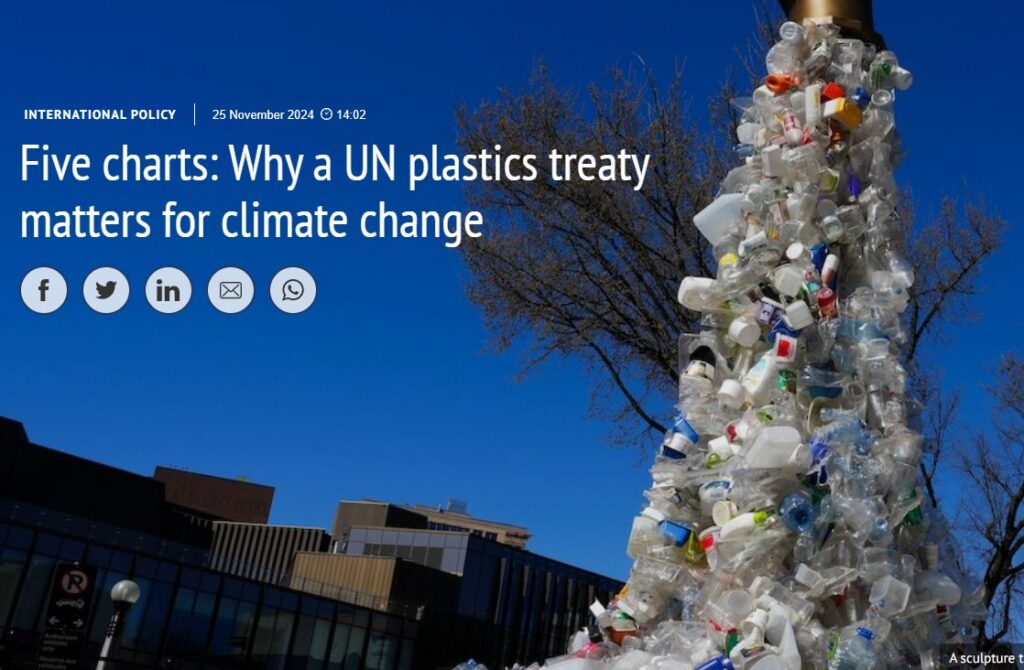 25 November 2024, Carbon Brief: … The production, use and disposal of plastics is responsible for around 5% of global greenhouse gas emissions and they are typically made from fossil fuels. Plastics production is expected to be one of the leading drivers of oil demand growth over the coming years…Years of negotiations between countries to agree on a treaty to tackle the scourge of plastic pollution are coming to a head in August 2025 in Geneva—but an ambitious treaty is far from certain…
25 November 2024, Carbon Brief: … The production, use and disposal of plastics is responsible for around 5% of global greenhouse gas emissions and they are typically made from fossil fuels. Plastics production is expected to be one of the leading drivers of oil demand growth over the coming years…Years of negotiations between countries to agree on a treaty to tackle the scourge of plastic pollution are coming to a head in August 2025 in Geneva—but an ambitious treaty is far from certain…
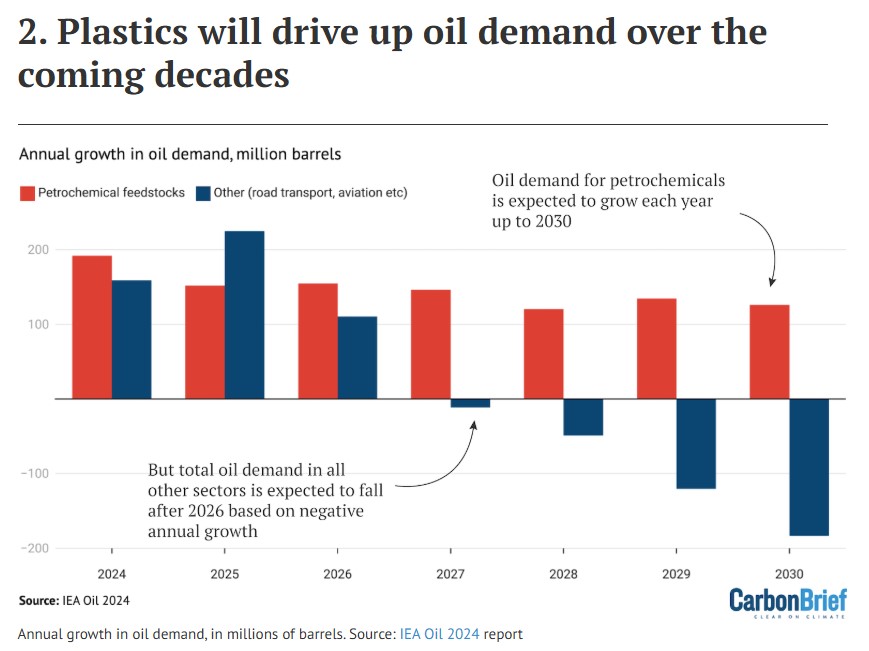
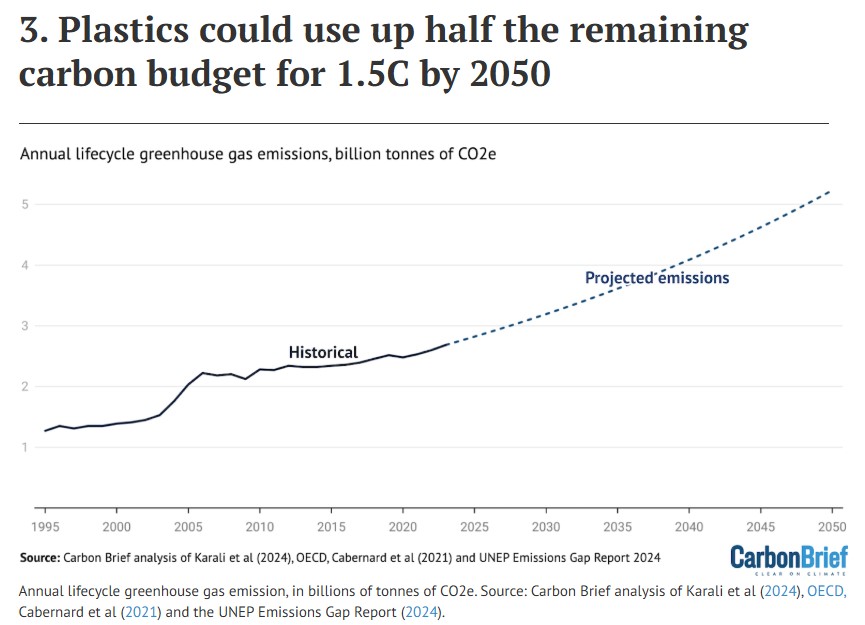
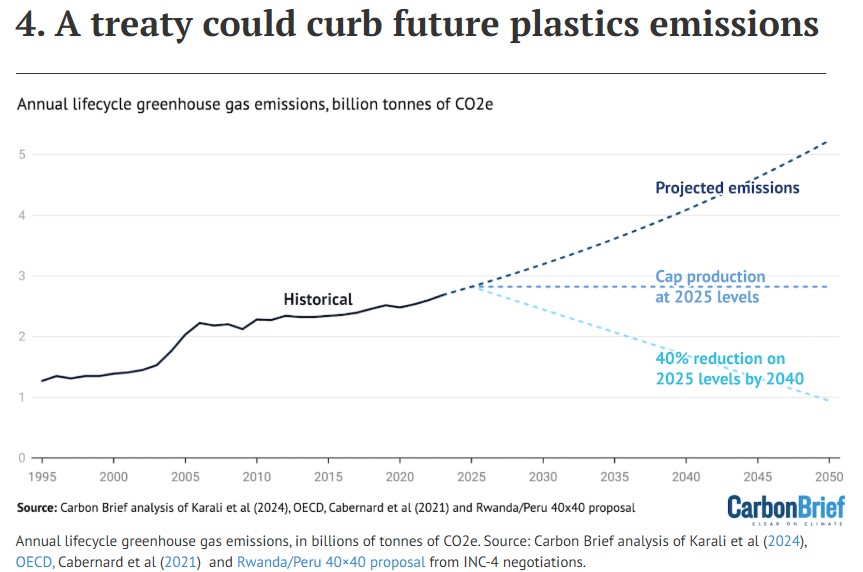
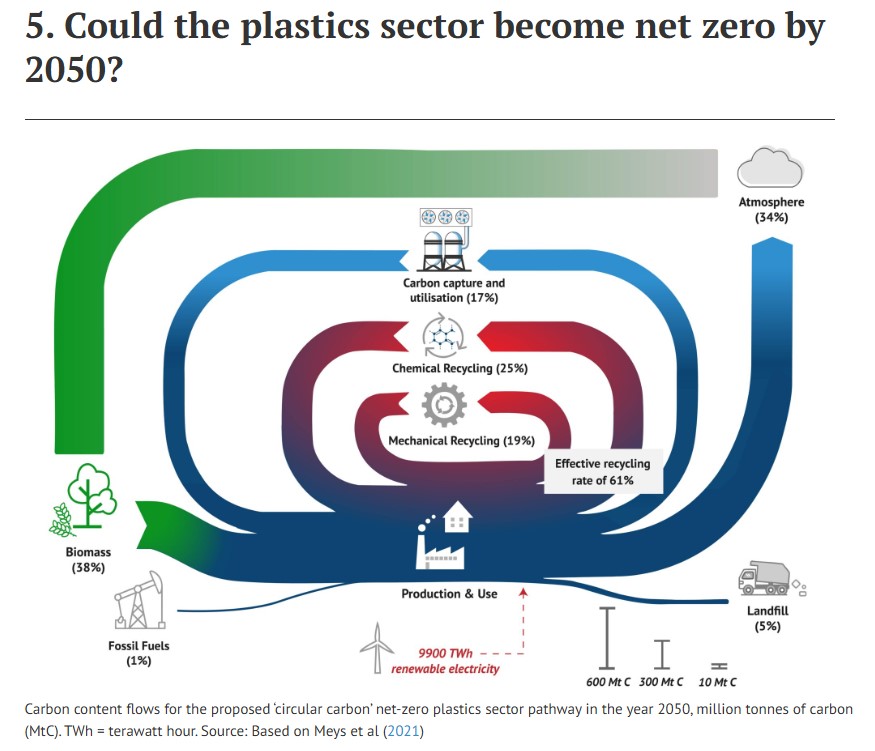
Running out of planet
Deep Sea now in jeopardy
 9 December 2021, Climate Home News: Europe conflicted over push to fast-track mining code for the ocean floor. While some EU states are calling for a moratorium on deep seabed mining, others have interests in exploration – with Germany sending mixed messages. Europe is torn between the precautionary principle and commercial interests in talks on opening the bottom of the ocean to mining. The International Seabed Authority (ISA) is scrambling to develop regulations for exploiting metals from the marine floor by July 2023. Under an obscure rule invoked by Nauru, if the deadline is not met the ISA will have to “consider and provisionally approve” licencing requests regardless. Scientists have warned of “irreversible” impacts on unique ecosystems should the industry be given a green light, saying there isn’t “sufficient and robust” information to make an informed decision. Proponents of mining say concretions found on the oceans’ floor could provide a huge supply of minerals to build electric cars, solar panels and wind turbines. Read more here
9 December 2021, Climate Home News: Europe conflicted over push to fast-track mining code for the ocean floor. While some EU states are calling for a moratorium on deep seabed mining, others have interests in exploration – with Germany sending mixed messages. Europe is torn between the precautionary principle and commercial interests in talks on opening the bottom of the ocean to mining. The International Seabed Authority (ISA) is scrambling to develop regulations for exploiting metals from the marine floor by July 2023. Under an obscure rule invoked by Nauru, if the deadline is not met the ISA will have to “consider and provisionally approve” licencing requests regardless. Scientists have warned of “irreversible” impacts on unique ecosystems should the industry be given a green light, saying there isn’t “sufficient and robust” information to make an informed decision. Proponents of mining say concretions found on the oceans’ floor could provide a huge supply of minerals to build electric cars, solar panels and wind turbines. Read more here
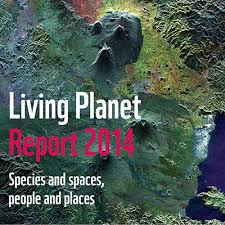 WWW Living Planet Report 2014: This latest edition of the Living Planet Report is not for the fainthearted. One key point that jumps out and captures the overall picture is that the Living Planet Index (LPI), which measures more than 10,000 representative populations of mammals, birds, reptiles, amphibians and fish, has declined by 52 per cent since 1970. Put another way, in less than two human generations, population sizes of vertebrate species have dropped by half. These are the living forms that constitute the fabric of the ecosystems which sustain life on Earth – and the barometer of what we are doing to our own planet, our only home. We ignore their decline at our peril. Access Report here
WWW Living Planet Report 2014: This latest edition of the Living Planet Report is not for the fainthearted. One key point that jumps out and captures the overall picture is that the Living Planet Index (LPI), which measures more than 10,000 representative populations of mammals, birds, reptiles, amphibians and fish, has declined by 52 per cent since 1970. Put another way, in less than two human generations, population sizes of vertebrate species have dropped by half. These are the living forms that constitute the fabric of the ecosystems which sustain life on Earth – and the barometer of what we are doing to our own planet, our only home. We ignore their decline at our peril. Access Report here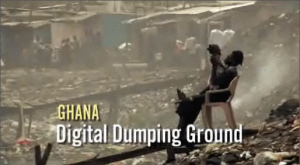 16 July 2015, Aljazeera: Have a look at this Infograph on the E-Waste Republic of Ghana. Over 40 million tonnes of electric and electronic waste (also known as e-waste) are produced worldwide every year. That is boundless heaps of refrigerators, computers, television sets, ovens, telephones, air conditioning units, lamps, toasters and other electric and electronic devices, with a total weight equal to seven times that of the Great Pyramid of Giza. The greatest producers of e-waste per person are the United States and the European Union, while developing countries, such as China, are producing an ever-increasing amount. Only a small part of this waste – about 15.5% in 2014 – is recycled with methods that are efficient and environmentally safe. The West African country of Ghana, currently undergoing intense economic growth, is an important centre for receiving, re-using, recovering and disposing of electronic waste. Accra, the capital, hosts a thriving second-hand market, a sprawling network of repair shops, and a range of activities which attempt to tap into the full potential of e-waste. And yet, it is also the location of an enormous and heavily polluted electronic waste dumpsite. Access Infograph here
16 July 2015, Aljazeera: Have a look at this Infograph on the E-Waste Republic of Ghana. Over 40 million tonnes of electric and electronic waste (also known as e-waste) are produced worldwide every year. That is boundless heaps of refrigerators, computers, television sets, ovens, telephones, air conditioning units, lamps, toasters and other electric and electronic devices, with a total weight equal to seven times that of the Great Pyramid of Giza. The greatest producers of e-waste per person are the United States and the European Union, while developing countries, such as China, are producing an ever-increasing amount. Only a small part of this waste – about 15.5% in 2014 – is recycled with methods that are efficient and environmentally safe. The West African country of Ghana, currently undergoing intense economic growth, is an important centre for receiving, re-using, recovering and disposing of electronic waste. Accra, the capital, hosts a thriving second-hand market, a sprawling network of repair shops, and a range of activities which attempt to tap into the full potential of e-waste. And yet, it is also the location of an enormous and heavily polluted electronic waste dumpsite. Access Infograph here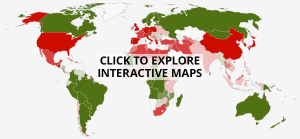

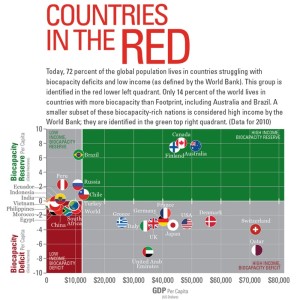 The fact that we are using, or “spending,” our natural capital faster than it can replenish is similar to having expenditures that continuously exceed income. In planetary terms, the costs of our ecological overspending are becoming more evident by the day. Climate change—a result of greenhouse gases being emitted faster than they can be absorbed by forests and oceans—is the most obvious and arguably pressing result. But there are others—shrinking forests, species loss, fisheries collapse, higher commodity prices and civil unrest, to name a few. The environmental and economic crises we are experiencing are symptoms of looming catastrophe. Humanity is simply using more than what the planet can provide. Read More here
The fact that we are using, or “spending,” our natural capital faster than it can replenish is similar to having expenditures that continuously exceed income. In planetary terms, the costs of our ecological overspending are becoming more evident by the day. Climate change—a result of greenhouse gases being emitted faster than they can be absorbed by forests and oceans—is the most obvious and arguably pressing result. But there are others—shrinking forests, species loss, fisheries collapse, higher commodity prices and civil unrest, to name a few. The environmental and economic crises we are experiencing are symptoms of looming catastrophe. Humanity is simply using more than what the planet can provide. Read More here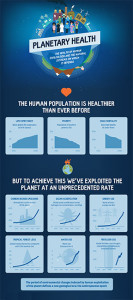 By almost any measure, human health is better now than at any time in history. Life expectancy has soared from 47 years in 1950–1955, to 69 years in 2005–2010, and death rates in children younger than 5 years of age have decreased substantially, from 214 per thousand live births in 1950–1955, to 59 in 2005–2010. But these gains in human health have come at a high price: the degradation of nature’s ecological systems on a scale never seen in human history. A growing body of evidence shows that the health of humanity is intrinsically linked to the health of the environment, but by its actions humanity now threatens to destabilise the Earth’s key life-support systems. As a Commission, we conclude that the continuing degradation of natural systems threatens to reverse the health gains seen over the last century. In short, we have mortgaged the health of future generations to realise economic and development gains in the present. See Commission for a full Executive Summary.
By almost any measure, human health is better now than at any time in history. Life expectancy has soared from 47 years in 1950–1955, to 69 years in 2005–2010, and death rates in children younger than 5 years of age have decreased substantially, from 214 per thousand live births in 1950–1955, to 59 in 2005–2010. But these gains in human health have come at a high price: the degradation of nature’s ecological systems on a scale never seen in human history. A growing body of evidence shows that the health of humanity is intrinsically linked to the health of the environment, but by its actions humanity now threatens to destabilise the Earth’s key life-support systems. As a Commission, we conclude that the continuing degradation of natural systems threatens to reverse the health gains seen over the last century. In short, we have mortgaged the health of future generations to realise economic and development gains in the present. See Commission for a full Executive Summary.

